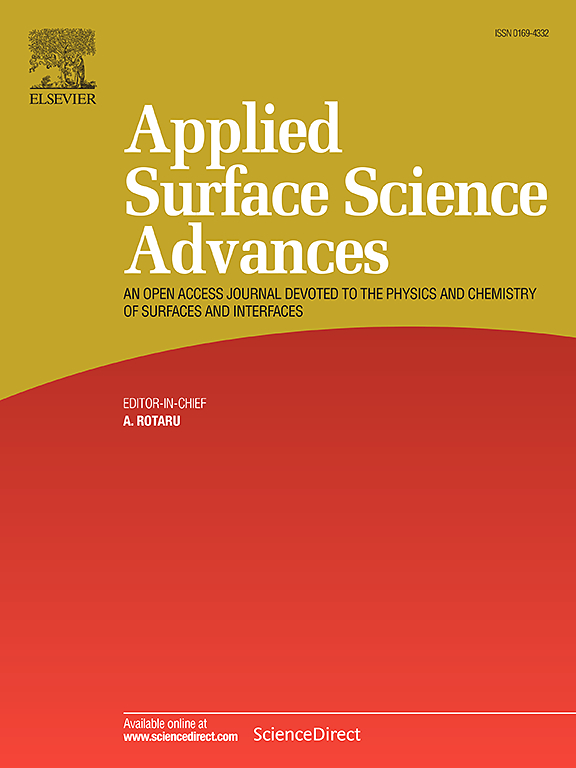Applications of sea urchin–like platinum nanoparticles for gene detection
IF 8.7
Q1 CHEMISTRY, PHYSICAL
引用次数: 0
Abstract
This study used biosensors based on two substrates, namely, sea urchin–like platinum nanoparticles (Pt SNPs) and spherical platinum nanoparticles (Pt NPs), to enhance the detection sensitivity of the metal-enhanced fluorescence method. Pt SNPs and Pt NPs were fabricated on silicon wafers through a fluoride-assisted galvanic replacement reaction. DNA probes of varying lengths (20, 25, 30, 35, and 40 mer) targeting Escherichia coli, Staphylococcus aureus, and Pseudomonas aeruginosa were immobilized on the Pt SNP and Pt NP chips through thiol bonds. The experimental results revealed that Pt SNPs and Pt NPs, due to their metal surface affinity and nanostructure features, but not pure silicon wafers enabled successful immobilization of the thiol-modified DNA probes. Notably, the Pt SNPs generated stronger fluorescence signals than the Pt NPs did because of their highly branched, rough and sea urchin-like surface. Fluorescence intensity gradually decreased as DNA probe length increased from 25-mer to 40-mer. However, the 40-mer probes still produced consistent and identifiable fluorescence signals, demonstrating robust detection even at extended probe lengths and confirming their utility in microbial gene detection using Pt SNP and Pt NP substrates.
类海胆铂纳米颗粒在基因检测中的应用
本研究采用基于海胆样铂纳米粒子(Pt SNPs)和球形铂纳米粒子(Pt NPs)两种底物的生物传感器来提高金属增强荧光法的检测灵敏度。采用氟化物辅助电取代反应在硅片上制备了铂单核苷酸多态性和铂NPs。以大肠杆菌、金黄色葡萄球菌和铜绿假单胞菌为目标的不同长度的DNA探针(20、25、30、35和40 mer)通过硫醇键固定在Pt SNP和Pt NP芯片上。实验结果表明,Pt snp和Pt NPs由于其金属表面亲和力和纳米结构特征,而不是纯硅片能够成功固定硫醇修饰的DNA探针。值得注意的是,Pt snp比Pt NPs产生更强的荧光信号,因为它们具有高度分支,粗糙和海胆样的表面。随着DNA探针长度从25-mer增加到40-mer,荧光强度逐渐降低。然而,40-mer探针仍然产生一致且可识别的荧光信号,即使在延长的探针长度下也显示出强大的检测能力,并证实了它们在使用Pt SNP和Pt NP底物进行微生物基因检测中的实用性。
本文章由计算机程序翻译,如有差异,请以英文原文为准。
求助全文
约1分钟内获得全文
求助全文

 求助内容:
求助内容: 应助结果提醒方式:
应助结果提醒方式:


